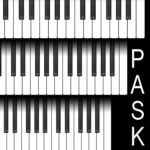Memorisation and sight reading
When playing alternatively sized keyboards, some pianists report greater ease with memorisation and sight reading.
‘I was very surprised by the difference it made in my ability to memorise music. Because everything was more natural and less awkward on the smaller keyboard, it was easier for my hands and muscles to learn the patterns and commit them to memory.’ Nicole Halton, New York, USA.
The first pianist to purchase a DS5.5® keyboard, Linda Gould, commented: ‘Sight-reading probably has the most dramatic effect. When you are sight-reading difficult music (especially with other chamber musicians) you do not have the time to work out the easiest way of playing a passage, you just plow through it. I am talking about pieces like Brahms Horn Trio, Saint Saens Piano Trios …See her testimony here under ‘ Our Story’: http://dsstandardfoundation.org/the-standards/
It is likely pianists with the smallest hands would notice the most improvement in sight-reading. This improvement would be most dramatic for a pianist with poor flexibility between their fingers, to the extent that many basic chords cannot be played on the conventional keyboard without dropping notes. When sight-reading, such a pianist has to make instant decisions about which notes to omit or how to get around a passage which is difficult or unplayable.


